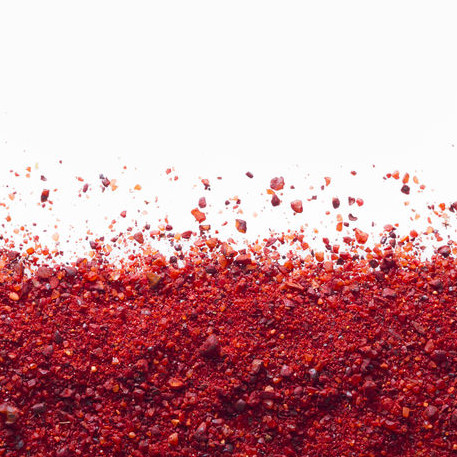
Annatto
What is Annatto?
Annatto is a natural orange-red food coloring derived from seeds of achiote tree (Bixa orellana), native to tropical areas. It is used to impart a yellow or orange color to foods such as cheese, bakery or meat products, soup mixes and beverages.
More than 70% of natural food colors are derived from this ingredient.1 The color strength is expressed as a percentage of its two main carotenoid molecules, bixin and norbixin. It is available in the form of:
- Powder
- Oil
- Paste
- Microcapsules
Origin
Bixa orellana is native to tropical regions such as Brazil, India, Kenya, Peru, and the Caribbean. Extracts from this plant were originally used as a medicine to treat heartburn or gastric distress, as a sunscreen or for body painting.
Commercial Production
Annatto extracts are obtained from the outer layer of Bixa orellana seed which contains about 5% annatto in the form of a resin.
The major coloring component of this ingredint is the cisbixin (C25H30O4). Annatto extract is a solution or suspension which can be prepared by pretreatment of the pericarp with hot water or steam. This is followed by either extraction with vegetable oil or mono- and di-glycerides, or solvent extraction.2
Three main steps in commercial processing:
- Extraction into oil
- Extraction with solvents
- Extraction into aqueous alkali
Composition and Nutrition
Annatto is a rich source of antioxidants such as vitamin E. The unique color of the seed is due to bixin and norbixin, non pro-vitamin A carotenoids.
Some food allergens have been linked to the presence of this extract. However, it is not considered one of the eight major food allergens.
Functional properties of annatto include:
1,3
- Food coloring suitable for water- and oil-based formulas
- Flavor enhancer but may impart a slightly sweet and peppery notes
- Antioxidant
- Antimicrobial
Application
In baking, annatto is used as a food coloring to impart a yellow or orange tint. It can also be used to enhance the color of fillings, frostings, gels, sugar cones, wafer biscuits, and create food colorings.4
If formulating with annatto, pay careful attention to potential deteriorative interactions with other components:
- Instability in acidic conditions but is very stable in alkalis
- Potential precipitation in the presence of calcium
- Instability in intense or direct light
FDA Regulation
Annatto is considered an ‘exempt color additive.’ This means it’s exempted from certification. Further regulatory information are available under 21CFR73.30.5
References
- What is Annatto? Uses, Benefits, and Side Effects. https://www.healthline.com/nutrition/annatto. Accessed by Dec 18. 2019.
- Satyanarayana, A., Prabhakara, P. G., and Rao, D. G. Chemistry, Processing and Toxicology of Annatto (Bixa orellana L.). Journal of Food Science and Technology. 40 (2003): 131-141.
- Annatto. https://pubchem.ncbi.nlm.nih.gov/compound/Annatto. Accessed by Dec 18. 2019.
- Rao, P. P., Satyanarayana, A., Balaswamy, K., Jyothirmayi, T., Nagender, A., and Rao, D. G. Application of annatto dye formulation in bakery and extruded food products. Journal of Foodservice. 18(2007): 53–58.
- CFR – Code of Federal Regulations 21CFR73.30. Accessdata. Fda. gov. April 01. 2019. https://www.accessdata.fda.gov/scripts/cdrh/cfdocs/cfcfr/CFRSearch.cfm?fr=73.30&SearchTerm=annatto. Accessed by Dec 18. 2019.

